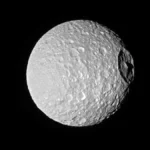
The International Space Station (ISS) is a habitable laboratory that orbits Earth at an altitude of approximately 250 miles (400 kilometers). It is a joint project between five space agencies: NASA (United States), Roscosmos (Russia), JAXA (Japan), ESA (Europe), and CSA (Canada). The ISS was first launched in 1998, and it has been continuously occupied by a rotating crew of astronauts and cosmonauts ever since. Here are some interesting facts about the ISS:
The ISS is the largest artificial satellite in Earth’s orbit, with a total mass of over 1 million pounds (454,000 kilograms). It is about the size of a football field, with a length of 357 feet (109 meters) and a width of 240 feet (73 meters).
The ISS has a pressurized volume of 32,333 cubic feet (916 cubic meters), which is equivalent to the interior space of a Boeing 747 jumbo jet. It has two main modules, the Russian Zvezda and the American Unity, which are connected by a series of tubes and passageways.
The ISS is home to six residents at a time, who work on a variety of scientific experiments and maintenance tasks. The crew members come from different countries and represent a diverse range of professions, including astronauts, engineers, doctors, and scientists.
The ISS orbits Earth at a speed of about 17,500 mph (28,000 km/h), completing one orbit every 90 minutes. This means that the crew members experience 16 sunrises and sunsets every day.
The ISS is powered by a series of solar panels, which generate electricity from the sun’s rays. It also has a system for collecting and purifying water from the air and other sources, as well as a toilet and shower facilities.
The ISS is a microgravity environment, which means that objects and people inside the station experience weightlessness. This allows for a wide range of scientific research, including studies on the effects of microgravity on the human body and the behavior of fluids and gases.
The ISS has played host to a number of important scientific experiments and technological demonstrations over the years. These have included research on human health, Earth observation, materials science, and the study of the universe beyond our planet.
The ISS is a cooperative project between several different nations, and it serves as a model for international cooperation in space exploration. It has welcomed visitors from over 18 countries and has been visited by astronauts from various backgrounds, including military pilots, test pilots, and civilians.
The ISS is expected to continue operating until at least 2030, and possibly beyond. It is a testament to the capabilities of human ingenuity and international collaboration, and it will continue to serve as a platform for scientific discovery and technological advancement for years to come.
Here are a few more interesting facts about the International Space Station:
The ISS is not stationary in space – it is constantly moving. In order to maintain its orbit around Earth, the ISS must regularly adjust its position using small thrusters. This is necessary because the station is affected by various forces, including Earth’s gravity and the pull of the moon and the sun.
The ISS has experienced a number of close calls over the years. In 2003, a piece of debris from a Russian rocket came within 200 feet (60 meters) of the station, and in 2012, a Russian supply ship crashed into the station while attempting to dock. The ISS has also been struck by lightning on several occasions.
The ISS has a number of robotic assistants, including the Canadian-built Dextre and the Russian-built Robonaut. These robots are used for tasks such as maintenance and repair work, and they can operate both inside and outside the station.
The ISS is equipped with a number of cameras and other instruments that allow the crew to study Earth and the universe beyond. These include telescopes, spectrometers, and other sensors that can detect various types of radiation and particles.
The ISS has hosted a number of cultural events over the years, including concerts, art exhibitions, and educational programs. In 2013, Canadian astronaut Chris Hadfield recorded a music video on the ISS for his cover of David Bowie’s “Space Oddity,” which became a viral sensation.
The ISS has a special room called the Cupola, which is a windowed observatory that offers a stunning view of Earth and space. The Cupola has become a popular spot for crew members to relax and observe the beauty of our planet.
The ISS has inspired a number of movies, TV shows, and other forms of popular culture. One of the most famous examples is the movie “Gravity,” which was partially set on the ISS and featured realistic depictions of life on the station.
The ISS has contributed significantly to our understanding of the universe and our place in it. Its scientific experiments and technological demonstrations have helped us to learn more about the nature of the cosmos and the challenges and opportunities that lie ahead for humanity.
The ISS has undergone a number of upgrades and expansions over the years, as new modules and equipment have been added to the station. Some of the most significant additions include the European Columbus and Japanese Kibo modules, which were both launched in 2008.
The ISS has a number of unique features that are designed to help the crew members cope with the challenges of living and working in space. These include specially-designed sleeping quarters, exercise equipment, and devices that help to prevent the loss of bone density and muscle mass that can occur in the microgravity environment.
The ISS has faced a number of challenges over the years, including budget constraints, technical difficulties, and political tensions between the participating countries. Despite these challenges, the ISS has continued to operate successfully and has become an important symbol of international cooperation and scientific progress.
The ISS is a complex and sophisticated structure that requires a huge amount of planning and coordination to maintain and operate. It is the result of decades of research and development by some of the world’s top engineers and scientists, and it represents an important milestone in the history of human space exploration.
The ISS has inspired the imaginations of people around the world and has helped to generate excitement and interest in science, technology, engineering, and mathematics (STEM). Its unique and awe-inspiring location has also made it a popular destination for tourists and space enthusiasts, who can visit the station through commercial spaceflight companies such as SpaceX and Blue Origin.
The ISS is a testament to the capabilities of human ingenuity and the power of international cooperation. It is a symbol of hope and progress, and it will continue to inspire and educate people for generations to come.
The construction of the ISS was a complex and ambitious project that required the collaboration of many different organizations and individuals. It involved the development of new technologies and techniques, as well as the coordination of multiple launches and assembly missions.
The ISS is not just a scientific laboratory – it is also a home for the crew members who live and work on the station. The crew members spend months at a time on the ISS, and they must learn to adapt to the unique challenges of living and working in space.
The ISS has a number of different research facilities, including labs for biology, materials science, and Earth observation. These facilities allow scientists to conduct experiments in a variety of fields, including medicine, physics, and biology.
The ISS is a unique and valuable resource for scientists and researchers around the world. It provides a unique environment that allows scientists to study the effects of microgravity on a variety of materials and organisms, including humans.
The ISS has contributed significantly to our understanding of the universe and our place in it. Its scientific experiments and technological demonstrations have helped us to learn more about the nature of the cosmos and the challenges and opportunities that lie ahead for humanity.
The ISS is a symbol of hope and progress, and it represents an important milestone in the history of human space exploration. It is a testament to the capabilities of human ingenuity and the power of international cooperation, and it will continue to inspire and educate people for generations to come.
The ISS has a number of unique features that are designed to help the crew members cope with the challenges of living and working in space. For example, the station has a series of airtight hatches and doors that help to maintain the air pressure inside the station and prevent air from escaping into space.
The ISS also has a number of systems that are designed to help the crew members stay healthy and comfortable while they are on the station. These systems include a medical bay, where crew members can receive medical treatment, as well as a kitchen, where they can prepare and eat meals.
In addition to the main living and working areas of the ISS, there is also a number of external platforms and trusses that are used for a variety of purposes, including solar power generation and communication. These external structures are exposed to the harsh conditions of space, and they require regular maintenance and repair.
The ISS has a number of sensors and instruments that are used to monitor various aspects of the station, including its structural integrity, environmental conditions, and the health and wellbeing of the crew members. These sensors provide valuable data that is used to ensure the safety and efficiency of the ISS.
The ISS has a number of backup systems and redundancies that are designed to ensure the safety of the crew members in case of an emergency. These systems include backup generators, oxygen tanks, and other critical components that can be used in the event of a failure or malfunction.
The ISS is a testament to the capabilities of human ingenuity and the power of international cooperation. Its construction and operation have required the collaboration of many different organizations and individuals, and it represents an important milestone in the history of human space exploration.
The International Space Station is a marvel of modern engineering and a symbol of human ingenuity and international cooperation. It is a unique and valuable resource that has contributed significantly to our understanding of the universe and our place in it. The ISS is a living, breathing laboratory that is home to a rotating crew of astronauts and cosmonauts from around the world, who work together to conduct scientific experiments and maintain the station. The ISS is a testament to the human spirit of exploration and the endless possibilities that lie ahead for humanity. It is a shining example of what we can accomplish when we work together and strive for excellence, and it will continue to inspire and educate people for generations to come.









